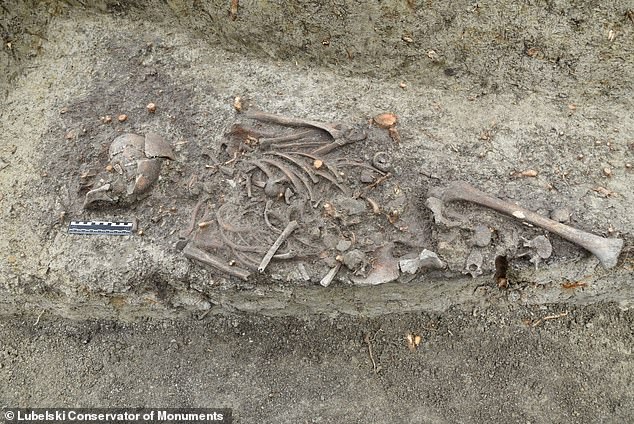The remains of a ‘vampire child’ with its head severed from its body and its skull positioned upside down have been unearthed on a hill in Poland.
Discovered during archaeological work in a 13th-century bishop’s garden in the southeastern city of Chelm, researchers also found the skeletal remains had stones placed on their torso.
The burial was marked by two posts facing east and west.
Pawel Wira, from the Conservator of Monuments, said: ‘A burial with the face pressed into the ground, cutting off the head or placing stones on the body are some of the burial methods used to prevent a person considered a demonic entity from leaving the grave.’
The grim remains were found alongside those of another child who archaeologists said had received a “normal” burial.
The remains of a ‘vampire child’ with its head severed from its body
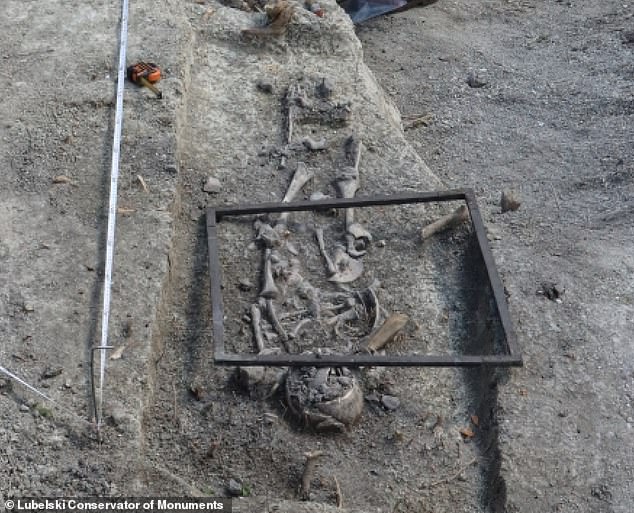
Researchers also found that the skeletal remains had stones placed on their torsos.
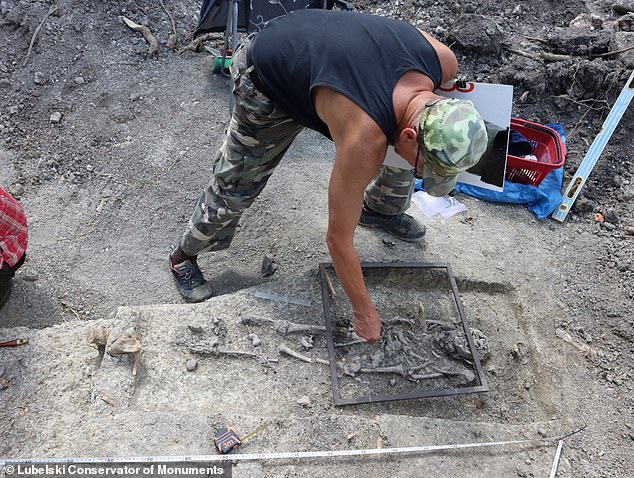
Pawel Wira, from the Conservator of Monuments, said: ‘A burial with the face pressed into the ground, cutting off the head or placing stones on the body are some of the burial methods used to prevent a person considered a demonic entity from leaving the grave.’
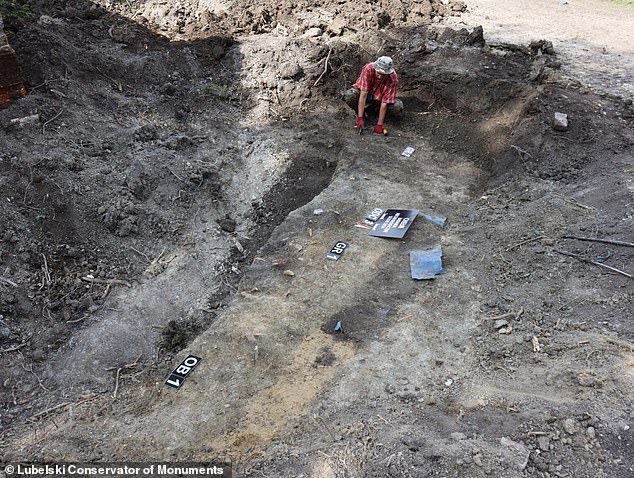
Archaeologists say they will now carry out tests on the skeletons to try to determine how old the children were when they died.
Wira added: ‘Both burials date back to the High Middle Ages, the 13th century.
‘The dead were buried without coffins.’
Archaeologists say they will now carry out tests on the skeletons to try to determine how old the children were when they died.
They also believe there may be more graves nearby.
Last year, archaeologists in Poland discovered similar cemeteries in several cities.
At a site in the village of Pień, the skeletal remains of another “vampire child” were found, lying face down with a triangular padlock tied to its foot.
Archaeologist Dariusz Poliński from Nicolaus Copernicus University explained: ‘The padlock under the foot symbolises the closing of a stage of life and serves to protect against the return of the deceased, which was probably feared.
‘These practices have their origins in popular beliefs and are sometimes described as anti-vampiric.’
He added that according to the rituals of the time, it was believed that being buried face down made the deceased “bite the ground and not harm the living.”
Another site near the village of Luzino contained a mass grave with nearly 400 bodies, many of which had been decapitated, with their skulls placed between their legs and a coin in their mouth.
The practice, which was common in the region, was believed to remove the “vampire curse.”
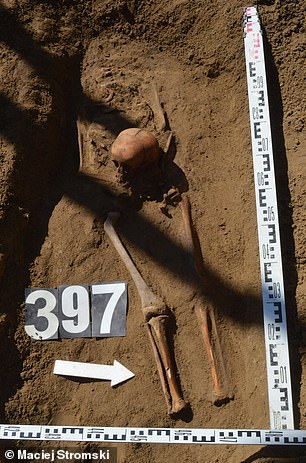
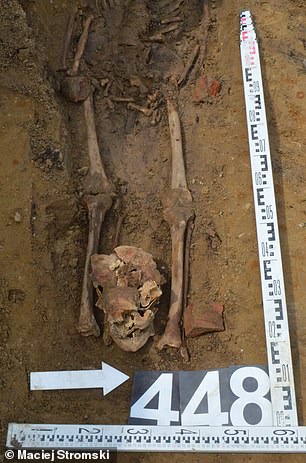
The macabre discovery, made in the village of Luzino in north-eastern Poland, found that some of the 450 skeletons had been decapitated and their skulls placed between their legs and a coin placed in their mouths.
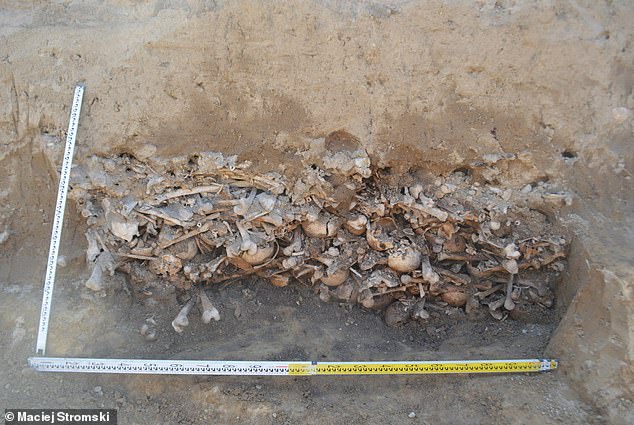
The practice of decapitations, which was common in the region during the 19th century, was believed to remove the “vampire curse.”
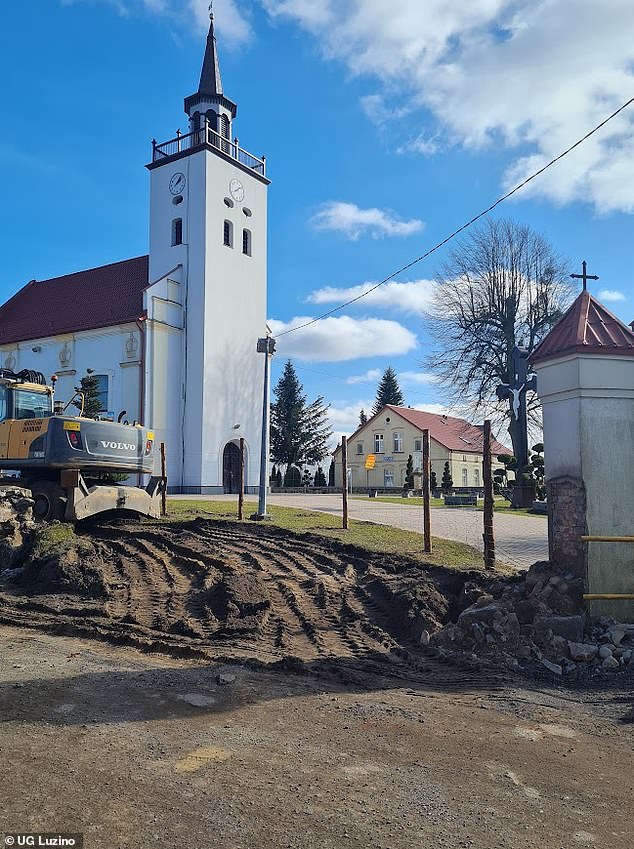
The excavation site in Luzino, Poland. Archaeologist Maciej Stromski said that in about 30 percent of the graves discovered, researchers also found bricks placed next to the legs, arms and heads of skeletons.
Archaeologist Maciej Stromski said: ‘We discovered examples of belief that the dead returned from the grave, a belief that could only be stopped by decapitation.
‘It was believed that if a member of the deceased’s family died shortly after the funeral, then he or she might be a vampire.
‘Therefore, after burial, the grave was dug and the head of the deceased was cut off, which was then placed between the legs.
‘We also discovered a specimen of a woman after decapitation.
‘A child’s skull was placed on his chest.’
He added that in about 30 percent of the graves discovered, researchers also found bricks placed next to the legs, arms and heads of skeletons.
Records of myths about the undead date back to the 11th century in Central Europe.
People feared that some of those buried might rise to the surface as blood-sucking monsters and terrorize the living.
It is not uncommon in the region to find burial sites where a metal rod – or stake – has been driven into the skull of the deceased.
People of the time believed that this was a way to ensure that the person remained dead.


